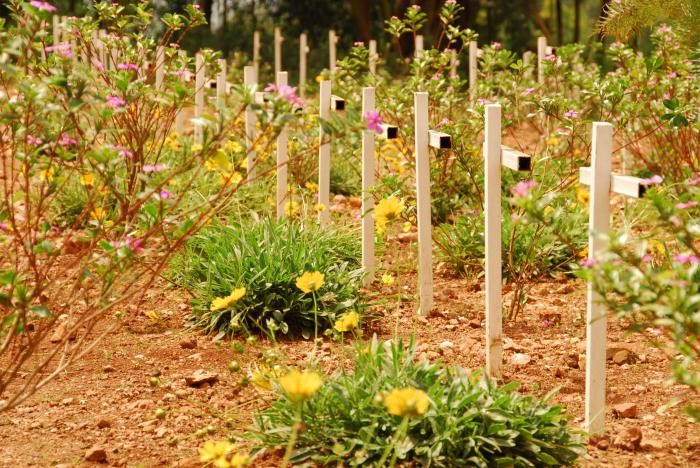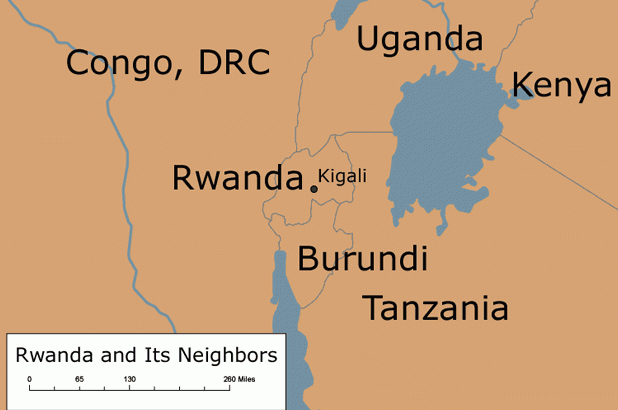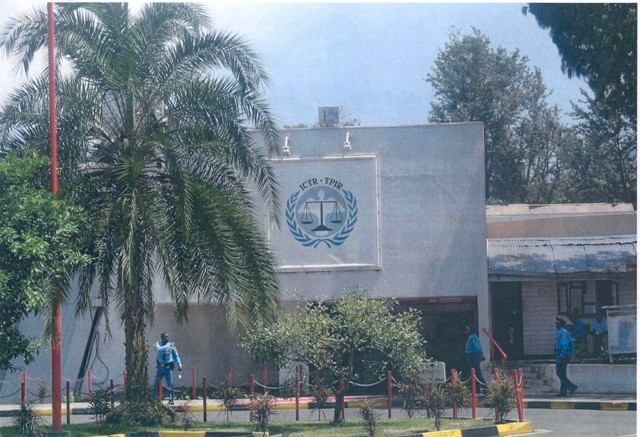
The Rwanda Genocide
Genocides have continued to occur since the Holocaust. This was the case, for example, in Rwanda in 1994. Over a period of 100 days, from April to July 1994, as many as one million people, mostly Tutsis, were massacred. This occurred when an extremist-led Hutu government launched a plan to wipe out Rwanda’s entire Tutsi minority and any others who opposed its policies.
Key Facts
-
1
From April to July 1994, extremist leaders of Rwanda’s Hutu majority directed a genocide against the country’s Tutsi minority.
-
2
Killings occurred openly throughout Rwanda on roads and in fields, churches, schools, government buildings, and homes. Entire families were killed at a time.
-
3
In response to the violence, the United Nations established the International Criminal Tribunal for Rwanda (ICTR) to bring to justice those accused of high level crimes.
Background

In 1994, Rwanda’s population was composed of three ethnic groups: Hutu, Tutsi, and Twa. Approximately 85 percent of the country was Hutu, while 14 percent was Tutsi and one percent was Twa.
Rwanda was ruled by leaders of the Hutu majority from the time it gained independence in 1962 until the genocide in 1994. During this period, the country’s Tutsi minority suffered systematic discrimination. They were also the targets of periodic outbreaks of mass violence. Hundreds of thousands of Tutsis fled the country in the 1960s and 1970s.
In 1990, a Tutsi rebel force invaded Rwanda from the north. Hard-line Hutu politicians accused Rwandan Tutsis of supporting the rebels. After the war reached a stalemate, Rwandan president Juvenal Habyarimana signed a peace agreement. The terms enabled Rwanda to transition to a government in which Hutus and Tutsis would share power. The agreement angered Hutu extremists. In response, they armed Hutu paramilitary forces and waged a vicious propaganda campaign against the Tutsis.
The One Hundred Day Genocide
On the evening of April 6, 1994, President Habyarimana was killed. A surface-to-air missile shot down his plane as it was landing in Kigali, the Rwandan capital. Who fired the missile remains in dispute. However, extremist leaders of Rwanda’s Hutu majority seized the assassination as the opportunity to launch a carefully planned campaign to wipe out the country’s Tutsis. They also targeted moderate Hutu leaders who might have opposed this program of genocide.
Political and other high profile leaders who might have been able to prevent the genocide were killed immediately. Violence spread through the capital and into the rest of the country. The genocide continued for roughly three months.
As the level of violence escalated, groups of Tutsis fled to places that in previous times of turmoil had provided safety: churches, schools, and government buildings. Many of these refuges became the sites of major massacres. The Rwandan military and Hutu paramilitary forces carried out the massacres using guns and explosives.
In addition to mass killings, thousands and thousands of Tutsis and people suspected of being Tutsis were killed in their homes and fields and on the road. Militias set up roadblocks across the country to prevent the victims from escaping. In cities, towns, and even the tiniest villages, Hutus answered the call of their local leaders to murder their Tutsi neighbors. Entire families were killed at a time, often hacked to death with machetes. Women were systematically and brutally raped.
Hundreds of thousands of Rwandan Hutus participated in the genocide. As many as one million people, mostly Tutsis, were slaughtered in 100 days.
Aftermath
The genocide ended when the Tutsi-dominated rebel movement, the Rwandan Patriotic Front (RPF), captured Kigali. The RPF overthrew the Hutu government and seized power. The new government announced a policy of “unity and reconciliation.” It adopted a new constitution that guaranteed equal rights for all Rwandans regardless of their group.
More than one million Hutus, including many of the genocidaires, fled to neighboring countries. In Zaire, today the Democratic Republic of the Congo, the refugees’ presence helped spark two international conflicts and ongoing insurgencies. More than five million people have died in the violence.
Justice

Seven months after the genocide began, the United Nations established the International Criminal Tribunal for Rwanda (ICTR). Its mission was to bring to justice those accused of high level crimes. The ICTR was held in neighboring Arusha, Tanzania.
On September 2, 1998, the ICTR delivered the first conviction for genocide by an international court. It ruled that Jean-Paul Akayesu was guilty of inciting and leading acts of violence against Tutsi civilians in the town where he served as mayor. This judgment was also the first by an international court to define rape as a crime in international law and to recognize rape as a means of committing genocide.
In another landmark case, the ICTR convicted a newspaper publisher and a radio station owner of the crime of incitement to genocide (a third defendant was found guilty as well, but was acquitted on appeal). It was the first time since the Nuremberg trial of the major German war criminals that an international court examined the responsibility of the media for mass atrocities.
In all, the ICTR indicted 93 persons and convicted 62 for crimes in connection with the genocide. Those prosecuted included high-level military and government officials, politicians and businessmen, and religious, media, and militia leaders.
Within Rwanda, the national courts tried more than 10,000 persons for planning the genocide or committing atrocities. In 2005, the government also implemented the traditional community court system known as gacaca (pronounced ga-CHA-cha). These courts heard the cases of the additional hundreds of thousands of Rwandans accused of participating in the genocide. In communities throughout the country, locally elected judges heard victims and witnesses testify. The judges also gave the defendants the opportunity to confess and ask for forgiveness. The gacaca courts tried more than 1.2 million cases before they closed in 2012.
Critical Thinking Questions
- Investigate the world and UN responses to the events in Rwanda.
- Why would the label of genocide be opposed or denied by other countries?
- How might citizens and officials within a nation identify and respond to warning signs of genocide or mass atrocity? What obstacles might be faced?
- How might other countries and international organizations respond to warning signs within a nation? What obstacles may exist?

